Everything You Need to Know About Brut Champagne
Raise a glass to decoding the mysteries of your favorite sparkling wine.B
There’s no drink more synonymous with the word “celebration” than brut champagne: No wedding is complete without a first toast, a romantic dinner just wouldn’t be the same without a glass of bubbly, and what else could you possibly ring in the new year with?
And yet, for all of our love of the sparkling stuff, between the “cuvées” and “blancs”, many of us can find ourselves intimidated when staring down a wine menu. Instead of opting for the old “order the second least expensive” trick, this season impress all of your guests by learning all of the ins and outs of ordering and serving champagne like a pro.
Read on for everything you need to know about the secret language of champagne, the essential equipment, and the wines you need for the perfect celebratory toast.

.
Though it may be the drink of kings, at its most basic level, champagne is a white wine. To earn the right to call itself champagne, though, a bottle must meet the Appellation d’Origine Controlée or AOC standards. The most basic of these is regional—authentic champagne can only be produced in the Champagne region in France, an area in the country’s northeast, about 100 miles outside of Paris.
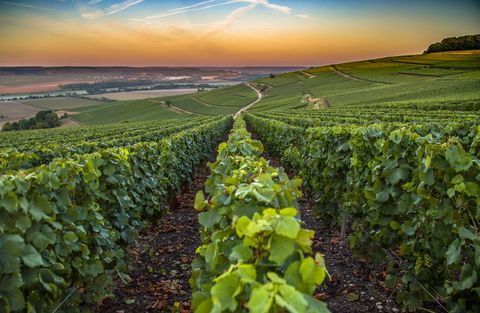
A VINEYARD IN THE CHAMPAGNE REGION OF FRANCE.GETTY IMAGESSEYESPHOTOGRAPHY
Of course, geography isn’t the end-all be-all. For a sparkling wine to achieve AOC status, it must also be made only from the approved grape varietals (Chardonnay, Pinot Noir, Pinot Meunier, Pinot Blanc, Pinot Gris, Arbane, and Petit Meslier, though the first three are by far the most commonly used in champagnes) via a handful of approved pruning methods, from land that does not exceed the maximum approved yield for the grapes; it also must undergo a secondary fermentation once it’s in the bottle and meet the standards for minimum periods of maturation on lees, a type of yeast that helps the wine develop its nuance and flavor.

.
Though sparkling wines go back farther than their history in northern France, what we know as champagne got its start accidentally.
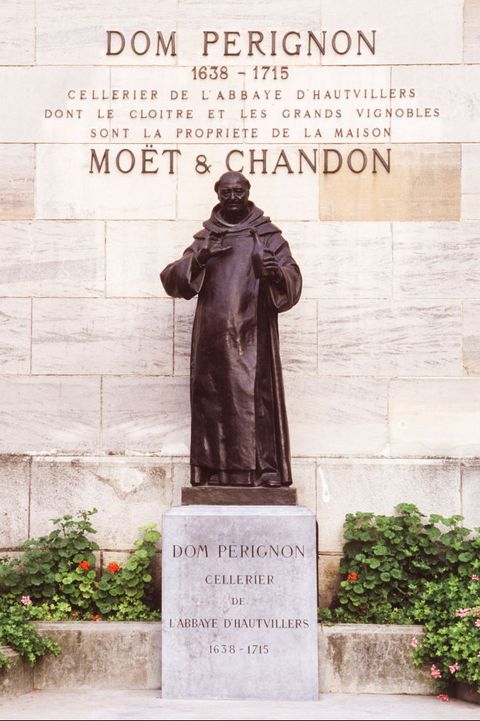
A STATUE OF DOM PERIGNON.GETTY IMAGESBERNARD CHARLONADVERTISEMENT – CONTINUE READING BELOW
As a byproduct of the Champagne region’s climate, early frosts would send the fermenting yeast in bottle-aging wine into hibernation; when the temperatures warmed, the yeast would wake back up and begin fermenting the wine again, producing an excess of carbon dioxide and, in turn, bubbles. These unexpectedly fizzing bottles were prone to bursting, earning the drink the spurious nickname “the devil’s wine.”
Legend has it that Benedictine monk Dom Pérignon is responsible for turning these errors into a true wine style in the 17th century (though he was, in fact, originally charged with the task of preventing the bubbles rather than perfecting them). The style grew quickly in popularity, especially among the French upper class, and following Napoleon’s invasion of Russia, became a go-to for the Russian Tsars as well, cementing its status as an elite beverage.

.
Type of Grape
Designations by grape type are typically either Blanc de Blancs, which is made only from white grapes, or Blanc de Noirs, which are made exclusively from red grapes. Despite the name, Blanc de Noirs also appear white in the glass just like Blanc de Blanc, but the two styles do have subtly different flavor profiles.
“Blanc de Blancs tend to be more fresh, lean and bright while Blanc de Noirs tend to be richer, denser and more red fruit driven,” explains Charles-Armand de Belenet, general manager of Champagne Bollinger. However, not all champagnes are made purely from either red or white grapes—indeed, a blend of the two types is very common, so don’t be put off if you don’t see any “Blanc” on your bottle.
Unlike their still counterparts, rosé champagnes are typically made by one of two methods—either allowing the pressed grape juice to sit on the grape skins for a brief period before fermentation, imparting both color and richer berry notes, or by blending the pressed white wine with still red wine. “This adds structure and a unique complexity, intensity and fruitiness to the wine,” says de Belenet.
Vintage

Vintage, as it appears on a champagne bottle, relates to the year in which the grapes in the wine were harvested. Vintage champagne comprises wine made from grapes harvested in the single year noted on the bottle, while non-vintage champagnes are made from wines blended from the harvests of multiple years to create the specific flavor profile the champagne house desires. While vintage champagnes, like vintage still wines, are highly prized for their ability to show off the unique character of a harvest, non-vintage champagne can encapsulate a house’s signature style more completely and consistently (and often at a much lower price point)
Dosage
While vintage and grape types may be immediately evident even to a champagne novice, dosage can seem more daunting to champagne neophites. Dosage relates to the amount of sugars added to the wine to enhance its flavor. “It’s more akin to salting your food than actually making it sweet,”de Belenet says. “The purpose is to achieve harmony and balance.” Dosage designations are noted from the sweetest to the driest: doux, demi-sec, sec, extra-sec, brut, extra brut, and brut nature, also known as non-dosage. Of the types, demi-sec, a sweet dessert style, brut, and extra brut are the most common seen in the US, with brut champagne accounting for 73.9 percent of all champagne shipped to the U.S. in 2017, according to the Champagne Bureau US.

.
There are as many opinions out there about the proper glass from which to drink champagne as there are glasses themselves and the differences between them aren’t purely aesthetic. Different glass shapes can drastically effect the flavor and experience of drinking champagne.
FLUTE
The most iconic style, of course, is the flute. With its slender bowl and high, tapered walls, a flute glass is designed to show off the bubbles in your bubbly for a picture perfect effect and to preserve the effervescence of your wine through multiple rounds of toasting. The narrow mouth of the glass tends to interfere with the unfolding of the wine’s fragrance notes, and in turn, the complete tasting experience, which makes it an also-ran in the eyes of many wine professionals. Try a flute with a champagne with a more robust nose, or use them to build your champagne cocktails (more on those below).
Similar to a flute but with a wider bowl and rim, the tulip is a favorite among many sommeliers and champagne houses. The steep base helps encourage those beautiful, pearl-like trails of bubbles, while a rounder shape allows the wine to open up more fully so you can experience the complete expression of the wine. This is a top choice for vintage champagnes.
COUPE
Supposedly modeled from Marie Antoinette’s breast (there’s no evidence that this is actually true), the coupe has a kitschy appeal that’s equal parts Gatsby-elegant and mid-century mod. It also happens to be on the list of sommelier’s least favorite glasses for champagne due to its wide, shallow bowl which tends to allow both the bubbles and the aroma of the wine to dissipate quickly. If you prefer the look of a coupe, opt for richer, full-bodied champagnes that can tolerate a bit more dissipation.
WHITE WINE GLASS
In recent years, many wine lovers have chosen to forgo the specialty glass debate altogether and treat champagne like its base spirit—white wine. The wider, deeper bowls tapering up to a slightly more narrow rim provide ample room for the champagne’s aromas to unfurl while also directing them up into the nose instead of dissipating them out in to the air. They also have the benefit of being versatile and often more durable than slender champagne glasses. “A white wine glass is always best,”agrees de Belenet.

.
Try one of these classic champagne cocktails:
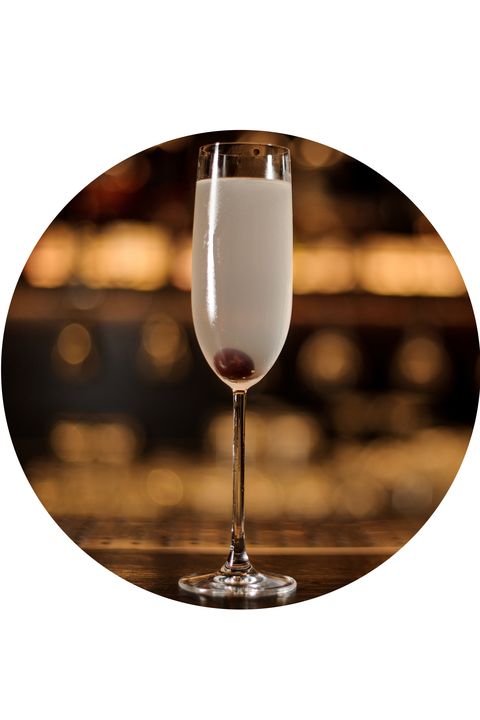
French 75
Ingredients
2 oz gin
.5 oz lemon juice
.25 oz simple syrup
Champagne
Instructions
Add gin, lemon juice, and simple syrup to a shaker with ice. Shake and strain into a champagne glass. Top with champagne.
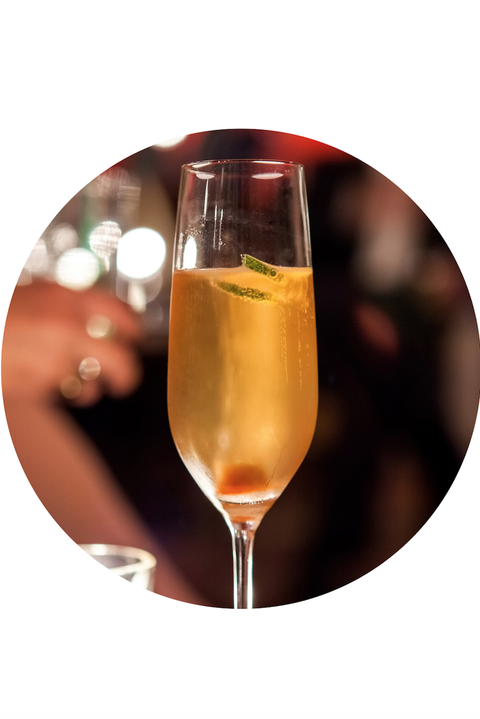
Champagne Cocktail
Ingredients
1 sugar cube
Angostura bitters
4 oz chilled champagne
Lemon zest
Instructions
Soak sugar cube in Angostura bitters, then drop soaked cube into a champagne flute. Pour in champagne. Add strip of lemon zest.
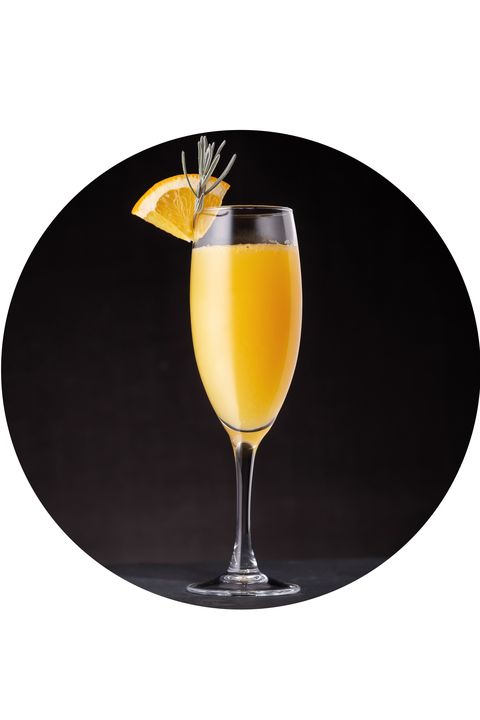
Mimosa
Ingredients
2 oz orange juice
2 oz champagne
Instructions
Pour orange juice into a champagne glass and top with champagne.
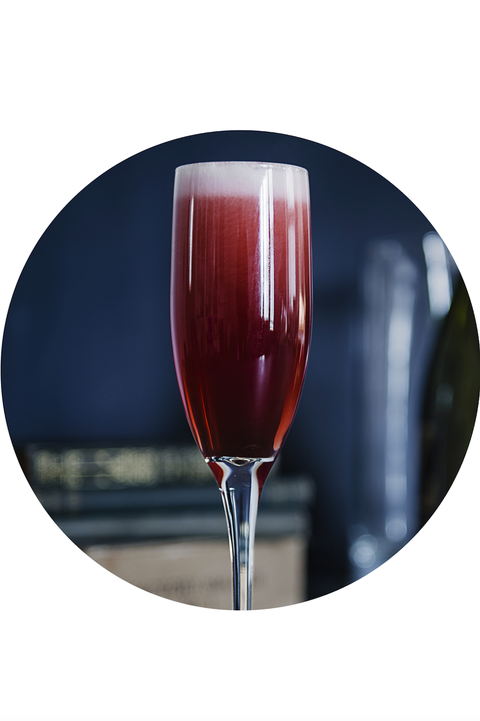
Kir Royale
Ingredients
.25 oz Chambord or creme de cassis
Champagne
Instructions
Add Chambord or creme de cassis to a champagne glass and top with champagne.